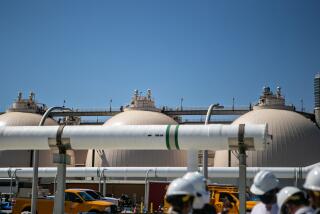Opinion: Is the Ballona Wetlands restoration project truly a ‘restoration’?

To the editor: Focusing on the possible discovery of a rare plant at the Ballona Wetlands ignores a number of other reasons why the “restoration” project should not occur. (“A rare plant and a renegade environmental activist could derail Ballona Wetlands restoration,” Nov. 23)
This is not a restoration, which is the act of returning something to its former condition. Rather, this entire project is about making Ballona a tidal wetland inundated with salt water, when historical photos and information strongly suggest this was mainly a freshwater wetland.
During a recent public hearing on the project, none of the advocates for this project even challenged this claim, which is something that should stop the so-called restoration.
Robert Vaghini, Los Angeles
..
To the editor: I have been a resident of Marina del Rey for more than 18 years. I attended the public hearing on Nov. 8 at Burton Chace Park.
From the window of my gym across Lincoln Boulevard, I get a daily panoramic view of the Ballona Wetlands, which mostly looks like an overgrown landfill. In fact, most of the remaining wetlands is a landfill, as the dirt dredged out to create the marina was dumped into this area. It is overrun with non-native species.
I don’t believe the wetlands can actually be “restored,” but it can be made healthy again. Proponents of the project have put forth good workable proposals for doing just that, including the removal of fill dirt so as to improve water flow and remove non-native species. They also want to make the wetlands more accessible to visitors.
Doing nothing, as the opposition demands, is not a logical option.
Mark Johnson, Marina del Rey
..
To the editor: I was fascinated with the article about the Ballona Wetlands.
Over the years, biologist Robert “Roy” van de Hoek, whose unverified discovery of a rare plant species could stop a controversial restoration project, has educated many students and parents at our school about plant and animal life at the Ballona Wetlands. His knowledge is so extensive and his curiosity boundless.
How exciting to hear he may have discovered another rare plant. Thanks to The Times for keeping us abreast of the constant tug-of-war surrounding this vital stretch of land.
Deirdre Gainor, Venice
..
To the editor: Independent citizen groups have been a critical part in saving the Ballona Wetlands Ecological Reserve.
In the late 1990s, the group Grassroots Coalition alerted the city of Los Angeles to oil field gas leaking out of the Playa Vista development site. The project’s experts denied there was a problem. After years of volunteers giving their time, Grassroots got the city to have an independent expert conduct a study.
That study showed Grassroots was right — there was a major gas leak at the site that required a new experimental gas mitigation system to be installed. Because of the gas issue, Playa Vista became a willing seller to the state of the wetlands west of Lincoln Boulevard.
Restoring Ballona as the seasonal freshwater wetland it is will be safer for the wildlife and plants and will use much less of our precious taxpayer funds.
Kathy Knight, Santa Monica
The writer is project manager for the Ballona Ecosystem Education Project.
Follow the Opinion section on Twitter @latimesopinion and Facebook
More to Read
A cure for the common opinion
Get thought-provoking perspectives with our weekly newsletter.
You may occasionally receive promotional content from the Los Angeles Times.






